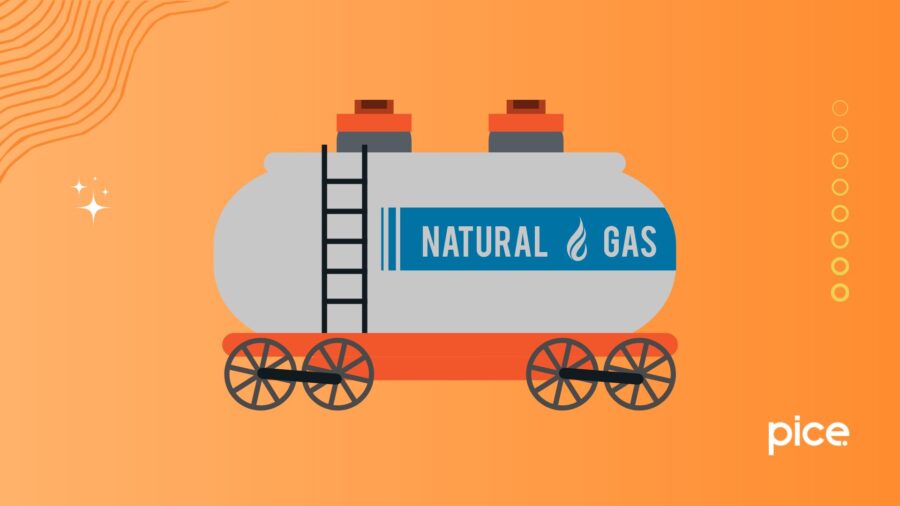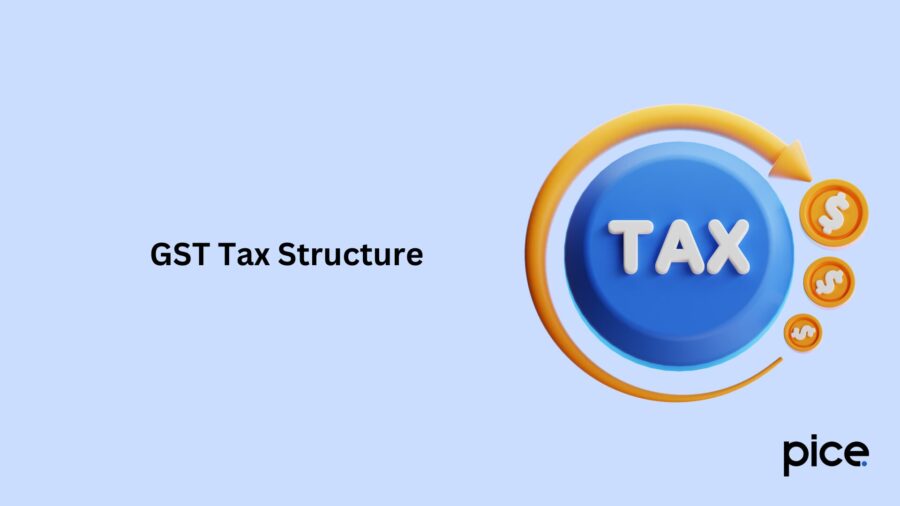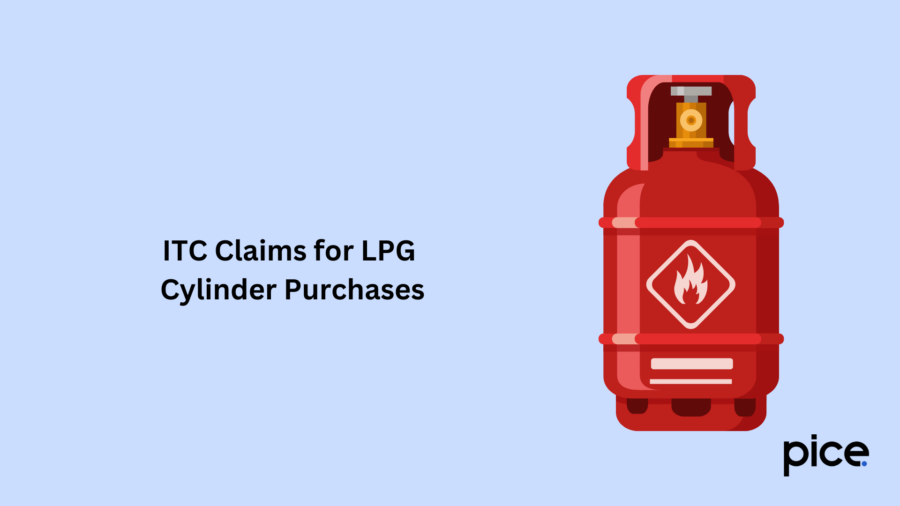Impact of GST on Oil and Gas Industry
- 6 Feb 25
- 7 mins

Impact of GST on Oil and Gas Industry
Key Takeaways
- Domestic LPG taxed at 5%, commercial LPG at 18% under GST.
- Work contracts in oil & gas now taxed at 18% GST.
- Businesses can claim ITC on commercial LPG purchases.
- Crude oil and natural gas remain outside the GST regime.
- Domestic LPG users face higher tax post-GST implementation.
Goods and Services Tax (GST), introduced in 2017 by the GST Council, is an indirect tax that replaced multiple taxes like VAT (Value-Added Tax) and service tax in India. While a certain segment has reaped the benefit of a reduced tax rate, other segments have been subject to higher tax rates. A significant difference is prominent in domestic and commercial LPG purchases.
Further, the impact of GST on oil and gas industry has also been notable. Explore the GST rates on different LPG cylinders, oil and gas projects, and the industry as a whole here.
Work Contracts Under the Oil & Gas Sector

Fuel oil and gas companies consult contractors for offshore and onshore platform building at the project stage. If this is a single contract for the entire work, it is termed a 'Work Contract' under the GST regulations.
Oil and gas companies procure multiple annual maintenance contracts, which are considered service contracts. However, if the repair or maintenance is associated with immovable property like machinery, which cannot be shifted from one place, the contract can be a competent ‘Works Contract.’.
The Government of India has increased the GST on work contracts pertaining to the oil and gas sector from 12% to 18% in 2022. The Central Government allows oil and gas corporations to negotiate with their contractors to categorise certain annual maintenance contracts as ‘Work Contracts.’. Notably, liquid fuels are charged at 18% GST.
Structure of Oil & Gas Companies
Oil and gas companies have three structures as follows:
Upstream Sector Under Oil & Gas Sector
The upstream companies in the oil and gas sector deal with searching and drilling underground or underwater to operate crude oil fields and bring crude oil to the surface. This includes exploration, drilling, projects, and operations.
Oil companies often have to acquire capital goods to set up platforms for drilling and exploration. These capital goods and requirements of procurement are subject to GST, while the output of oil and natural gas are not considered under GST.
Midstream Sector Under the Oil & Gas Sector
The midstream sector involves shipping using trucks, barges, tankers, rail, or pipelines. It further includes wholesale marketing of crude oil, storage, and transfer of petroleum products. The pipelines are essential to transport oil from one depot to another or from storage to downstream distributors.
If midstream corporations do not involve themselves in the sale/purchase of crude oil or gas, it is considered as 'pure services,' which are eligible for input tax credit (ITC).
Downstream Sector Under Oil & Gas Sector
Refining petroleum crude oil is the primary activity of downstream corporations. The primary components, such as raw crude oil and raw crude gases, do not come under the GST regime. On the flip side, the output includes both non-taxable and taxable products.
GST Tax Structure

The GST regime presents five tax rates for goods and services supply chains in India. These rates are 0%, 5%, 12%, 18% and 28%. The GST Council is yet to decide upon the e-way bill, motor spirit and lottery tax in the oil and gas sector.
Products and Their Classification Under the GST Rule
Here are some of the products and the applicable GST rate on supply of these products:
| 0% | 5% | 12% | 18% | 28% | |
| Products | Milk | Domestic LPG | Butter | Hair Oil | Small Cars |
| Eggs | Tea | Ghee | Soap | Air Conditioner | |
| Curd | Edible Oils | Almonds | Computers | Fridge | |
| Besan | Spices | Mobiles | Printers | High-end Motorcycles |
GST on LPG Cylinders
GST on LPG cylinders varies based on its utility in India. While the GST on domestic LPG cylinders is lower, the GST rate applicable on commercial LPG cylinders is higher. This ensures affordability for LPG cylinders in households while paving the way for revenue generation for the government. Businesses dealing in such cylinders need to adhere to the GST laws for proper tax payment and invoicing of supplied LPG cylinders.
Applicability of GST on LPG
The difference in GST rate for domestic and commercial LPG cylinders impacts gas prices. As a result, it is essential to comply with GST regulations in terms of the use of LPG. LPG suppliers need to be registered under GST to sell it and should mandatorily issue invoices for each transaction for compliance with GST regulations.
The following table illustrates the GST rate for LPG cylinders based on their utility.
| Product | GST Rate | HSN Code |
| Domestic LPG Cylinders | 5% | 2711 |
| Commercial LPG Cylinders | 18% | 2711 |
ITC Claims for LPG Cylinder Purchases

Businesses purchasing LPG cylinders for the furtherance of their operation can claim input tax credit (ITC). In other words, businesses purchasing LPG cylinders for commercial purposes are eligible for ITC claims.
ITC helps businesses reduce their overall tax burden and tax liability. Notably, to claim ITC, businesses should be mandatorily registered under the tax regime (GST regime). In addition, they should maintain documents and issue proper invoices for all sales transactions. The availability of ITC helps businesses manage their cash flow and finances efficiently.
Does GST Have a Positive Impact on the Gas Industry?
Commercial LPG users reap the benefits of GST as its introduction replaced multiple taxes and reduced the overall tax rate. However, the gas industry has to wait to reap the benefits of GST until LPG-driven vehicles acquire the market. The domestic users of LPG have to pay the applicable rate of 5% for every purchase without the eligibility to claim ITC.
Conclusion
The impact of GST on the oil and gas industry is significant. Prior to the implementation of GST, commercial users had to pay 22.5% tax, including 14.5% VAT (value-added tax) and 8% excise duty. However, with the GST introduction, the rate has been reduced to 18%.
On the flip side, the tax rate on LPG was between 2% to 4% before the GST introduction in 2017, for cooking gas used in households. As a result, domestic users have to pay a higher tax on LPG cylinders with GST in effect. Thus, households faced an adverse impact of GST on LPG.
💡If you want to streamline your payment and make GST payments via credit card, consider using the PICE App. Explore the PICE App today and take your business to new heights.
 By
By 
















